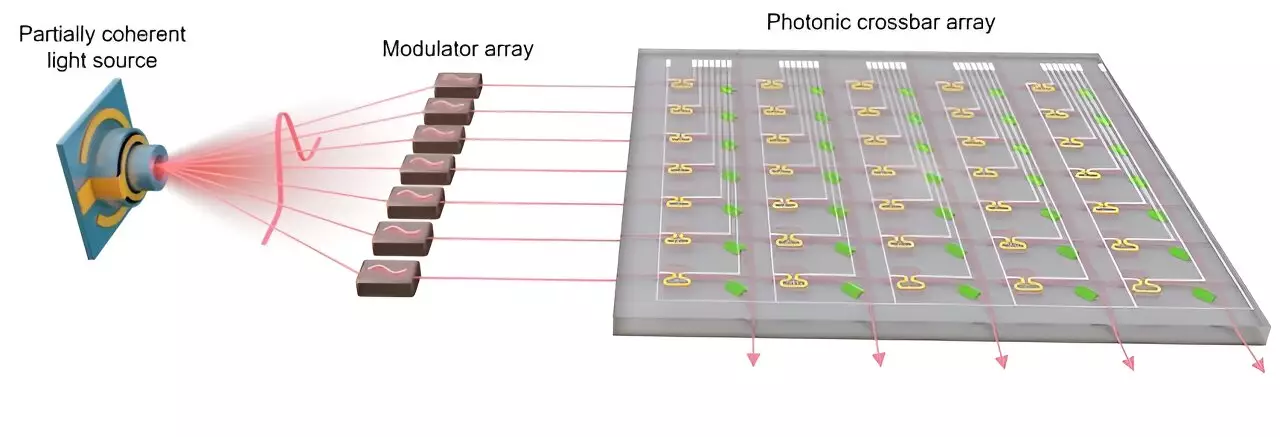In a groundbreaking study published in *Nature*, researchers from the University of Oxford, together with partners from the Universities of Muenster, Heidelberg, and Ghent, have challenged long-held beliefs in the optics community. Their findings suggest that the use of low-coherence light sources can dramatically improve the performance of optical computing systems, especially in light-driven artificial intelligence (AI) applications. This revelation not only redefines our approach to photonic technologies but also opens the door to more cost-effective and energy-efficient solutions in a rapidly evolving field.
Understanding Coherence: The Key to Light Source Performance
Coherence, in the context of light, refers to the degree of correlation between the electromagnetic waves in a beam of light. Typically, high-coherence sources like lasers offer stability and consistency, hence their prominence in applications requiring precision—be it in medical imaging, optical communication, or remote sensing technologies. The expectation has always been that more coherent sources lead to increased system performance, enabling everything from higher resolution imaging to more accurate measurements.
However, the new findings from the collaborative study indicate that this understanding may be overly simplistic. By demonstrating the enhanced capabilities of low-coherence light, such as that produced by ordinary light bulbs or the sun, researchers have pioneered a paradigm shift. This could usher in a new era of utilizing accessible light sources in computing technologies that historically relied on sophisticated and expensive laser systems.
The Remarkable Discovery of Parallel Computation
At the heart of this research is the use of a partially coherent light source generated by an electrically-pumped erbium-doped fiber amplifier. By harnessing a carefully selected fraction of the incoherent light spectrum, the researchers were able to channel this light into various inputs of a photonic AI accelerator. Astonishingly, they found that the parallelism of AI computations could be increased significantly—by a factor of N, corresponding to the number of input channels utilized in the photonic array.
This finding is not merely theoretical; the research team successfully applied their system to real-world challenges, such as diagnosing Parkinson’s disease from gait analysis, achieving an impressive classification accuracy of over 92%. The ability to execute rapid computations—reported at around 100 billion operations per second—highlights the practical implications of their work. Previously, such astonishing speeds could only be matched by using multiple lasers, demonstrating the transformative potential of a single, well-implemented light source.
Breaking Down Barriers in Photonic Technology
The implications of this research extend far beyond AI accelerators. As noted by Dr. Bowei Dong from the University of Oxford, leveraging “poorer” light sources can result in a remarkable scaling effect, with potential speed-ups of over 100 times compared to traditional laser systems. This dimension of scaling is particularly crucial for the evolving needs of AI and data processing, where efficiency and speed are paramount.
Professor Harish Bhaskaran, an integral figure in this study, has expressed intentions to explore future applications of partially coherent light in optical communications and emerging optical interconnect technologies. This forward-thinking approach highlights how research in photonic computing can ripple through various domains of technology, promising cheaper, faster, and more adaptable solutions for the challenges we face today.
A Flawed Yet Intriguing Assumption
The discovery raises intriguing questions about longstanding assumptions in the field of optics and photonics. For decades, the prevailing mindset has favored the use of coherent light sources due to their perceived superiority in enhancing performance metrics across multiple applications. Thus, this research is noteworthy, as it doesn’t merely suggest a different way of utilizing light; it invites a broader reevaluation of the fundamental principles that guide our understanding of light in technology.
Perhaps what this research illustrates most effectively is the need to remain open to possibilities outside the conventional purview. The boundaries of technology often shift dramatically with new insights, pushing us to reconsider existing standards and methodologies. By forging a path for the use of less-than-ideal light in advanced computational frameworks, we may well be on the cusp of a revolutionary progression in how technology interacts with our world.


Leave a Reply